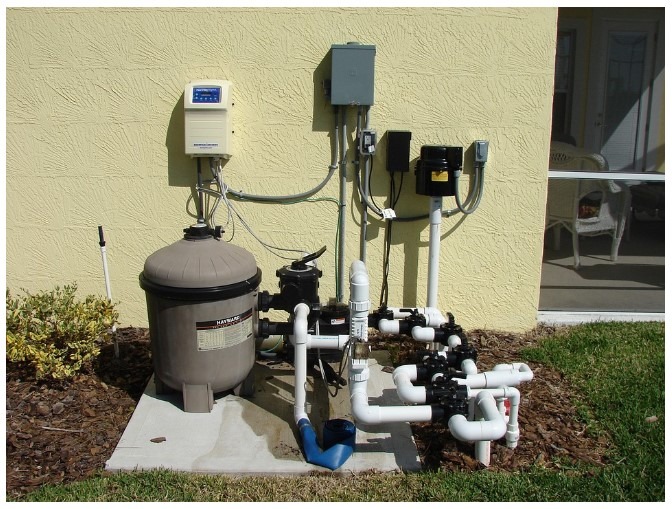Drinking water is vital for maintaining good health, but the presence of heavy metals in it can have detrimental effects on our wellbeing. These contaminants can slowly build up in the body, contributing to various health problems such as lowered immunity, cognitive decline, and organ damage. Safeguarding your health requires finding ways to eliminate or minimize exposure to these harmful elements.
This article discusses the sources of heavy metals in drinking water and presents methods for removing them to ensure that you and your family consume clean and safe water.
Common Heavy Metals Found in Drinking Water
There are several heavy metals that experts consider dangerous when present in drinking water. Here are a few of them:
- Lead: A neurotoxin that accumulates over time, causing damage to the nervous system and organs. It primarily enters drinking water through corroded pipes. Exposure to lead can lead to developmental issues in children, while long-term exposure may cause high blood pressure and kidney dysfunction in adults.
- Arsenic: This odorless and tasteless element occurs naturally in various minerals or through human activities such as mining, agriculture, or manufacturing. Long-term ingestion of arsenic-contaminated water can lead to cancer, cardiovascular disease, diabetes, and birth defects.
- Mercury: A potent neurotoxin that primarily comes from industrial processes like coal-burning power plants. Research has shown that even low levels exposure can adversely affect developing brains; hence pregnant women should be particularly cautious about consuming mercury-contaminated water.
- Cadmium: Primarily airborne emissions from industries contribute this hazardous metal into the environment. It can infiltrate water sources, and long-term ingestion may lead to kidney failure, bone deterioration, and cancer.
Monitoring Heavy Metal Levels in Drinking Water
Knowing your drinking water source is the first step towards ensuring its safety. Public water systems undergo regular testing for contaminants including efforts to remove heavy metals from drinking water, under the oversight of government regulatory bodies. Residents serviced by these systems can request a Consumer Confidence Report from their local water supplier for information about any detected contaminants in their water supply.
For those relying on private wells, the responsibility of ensuring water quality rests with the homeowner. At least once a year, regular testing for heavy metals should be conducted to ensure they remain at safe levels. Certified testing laboratories can be found through state or local health departments.
Treating and Removing Heavy Metals from Drinking Water
If tests reveal that your drinking water contains elevated levels of heavy metals, there are several options available for treatment. Depending on the contaminant, removing or reducing it may require one or more methods:
- Reverse Osmosis (RO): A common household filtration system that uses a semipermeable membrane to filter out metal ions. RO systems are highly effective in removing most heavy metals like lead, arsenic, cadmium, and mercury. However, they may also remove beneficial minerals like calcium and magnesium from your drinking water.
- Distillation: This process involves heating water to evaporate it, leaving behind impurities such as heavy metals which do not vaporize easily with H?O molecules. The condensed steam produces clean distilled water free of toxic elements like arsenic or lead but again devoid of essential minerals. Dual processes combining distillation with activated carbon filtration help to eliminate volatile organic compounds while retaining minerals.
- Activated Carbon Filters: Featuring a porous structure, these filters can remove a wide range of contaminants by adsorbing them onto their surfaces. Activated carbon filters can effectively reduce the levels of lead and mercury in water but are not very effective against arsenic or cadmium.
- Ion Exchange (Water Softeners): This process removes heavy metals by replacing them with sodium ions, which do not pose health risks. Ion exchange systems are suitable for reducing levels of lead or linearly cadmium in drinking water but may not be as effective in removing arsenic or mercury.
In choosing an appropriate water treatment method, evaluations of the types and concentration of heavy metal elements in your water supply should be taken into consideration. It is essential to regularly maintain and replace filters and equipment according to manufacturer recommendations to ensure continuous effectiveness.
Preventing Heavy Metal Contamination
Besides treating your drinking water, it is crucial to invest in preventing contaminant exposure:
- Investigate if any industries or activities nearby contribute to heavy metal pollution and engage local authorities in addressing possible issues.
- Avoid using hot tap water for cooking or drinking; as elevated temperatures can accelerate corrosion, leading to higher levels of contaminants like lead leaching into your water.
- If you have older plumbing or suspect lead-based materials in your home, consider hiring a professional plumber to inspect and replace components as needed.
Conclusion
The presence of heavy metals in drinking water poses threats to our health over time. There are proactive steps individuals must take to safeguard their wellbeing through testing, mitigating potential sources of contamination, investing in appropriate filtration systems, and engaging with relevant authorities about the quality standards imposed on public drinking water supplies. By prioritizing these strategies, you can safeguard your health and that of your loved ones by ensuring clean and safe drinking water.

